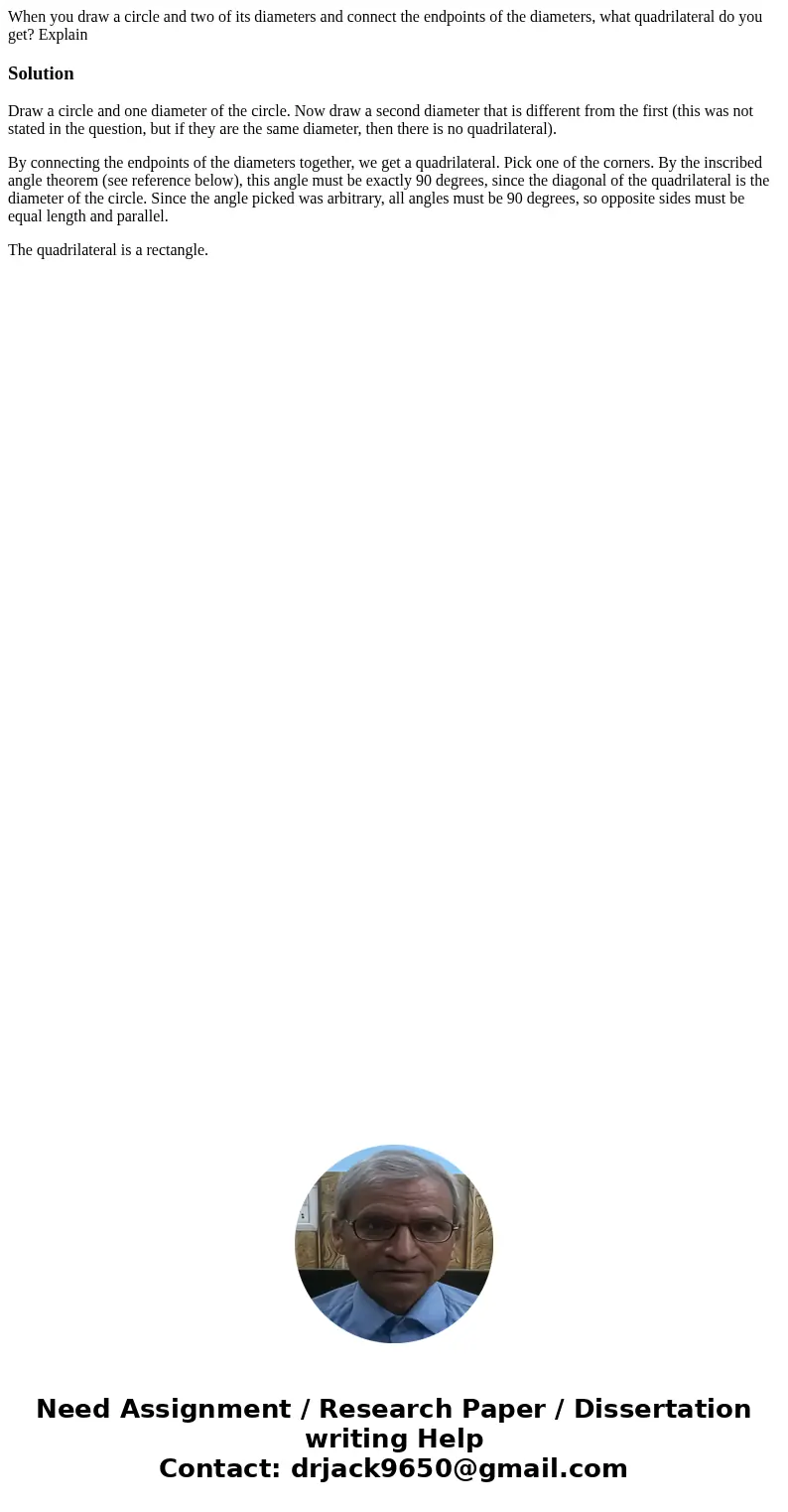When you draw a circle and two of its diameters and connect
When you draw a circle and two of its diameters and connect the endpoints of the diameters, what quadrilateral do you get? Explain
Solution
Draw a circle and one diameter of the circle. Now draw a second diameter that is different from the first (this was not stated in the question, but if they are the same diameter, then there is no quadrilateral).
By connecting the endpoints of the diameters together, we get a quadrilateral. Pick one of the corners. By the inscribed angle theorem (see reference below), this angle must be exactly 90 degrees, since the diagonal of the quadrilateral is the diameter of the circle. Since the angle picked was arbitrary, all angles must be 90 degrees, so opposite sides must be equal length and parallel.
The quadrilateral is a rectangle.

 Homework Sourse
Homework Sourse